Occupational Safety Training for Motorcycle Chain Manufacturing
99,000 ₫
Note: The above price is calculated per person and may vary depending on the number of trainees participating in the course and market fluctuations. For more accurate pricing information, please refer to the price list or contact our consultants directly.
Occupational safety is an important issue in motorcycle chain manufacturing factories and needs to be addressed promptly to ensure the health and safety of workers, as well as to enhance the reputation of businesses. The Occupational Safety Training course is an effective solution to raise awareness about accident prevention for workers involved in motorcycle chain production.
Table of Contents
Toggle1. Overview of Motorcycle Chains
a. What is a motorcycle chain?
A motorcycle chain, also known as a motorbike chain, is an important component in the motorcycle’s drivetrain system. The motorcycle chain transmits power from the engine to the rear wheel, enabling the bike to move.
The structure of a motorcycle chain consists of many interconnected links joined by pins, forming a strong linked sequence. These links are usually made of hardened steel, capable of withstanding force and resisting wear. To ensure performance and longevity of the chain, users need to regularly inspect and maintain it, including lubricating and adjusting the chain tension.
Choosing and maintaining the motorcycle chain properly not only helps the bike operate smoothly but also ensures rider safety. A worn or overly tight chain can cause dangerous situations while riding. Therefore, understanding and caring for the motorcycle chain is essential for all motorbike users.

b. Machinery used for motorcycle chain production
- Link cutting and shaping machines: These machines cut steel sheets into small pieces, which are then shaped into chain links through pressing or stamping. The links must have high precision to ensure strong connections.
- Chain assembly machines: After shaping the links, they are fed into assembly machines that connect the links together with pins, creating a strong linked chain. This process requires high accuracy to ensure smooth and durable chain operation.
- Heat treatment machines: To increase hardness and wear resistance of the links and pins, the chains undergo heat treatment, which involves controlled heating and cooling of chain parts to improve their mechanical properties.
- Quality inspection machines: Once fully assembled, chains are inspected with specialized machines. Tests include strength, load capacity, and wear resistance to ensure the chains meet strict quality standards.
- Lubrication and maintenance machines: Finally, chains are lubricated using specialized machines to ensure smooth operation, reduce friction and wear during use. This step is crucial to prolong chain life and maintain motorbike performance.

c. Famous motorcycle chain manufacturing brands
Currently, there are many well-known brands in the motorcycle chain manufacturing industry, recognized for high quality and superior durability. Below are some notable brands:
- D.I.D:
- D.I.D (Daido Kogyo) is one of the leading brands in motorcycle chain production. Founded in Japan, D.I.D is famous for advanced technology and excellent product quality. D.I.D chains are often used in MotoGP races and other major competitions, proving their reliability and high performance.
- RK:
- RK Takasago Chain, another Japanese brand, is renowned for high-quality motorcycle chains. RK offers a diverse product range, from standard chains to premium chains designed for racing bikes. RK products are highly rated for durability, load capacity, and smooth operation.
- Regina:
- Regina, an Italian brand with a long history in motorcycle chain manufacturing, is known for advanced production technology and continuous innovation. Their products meet the strictest requirements and are widely used in international racing and trusted by many professional riders.
- Tsubaki:
- Tsubaki (Tsubakimoto Chain Co.) is another reputable Japanese brand with over 100 years of experience in chain and transmission industries. Tsubaki provides motorcycle chains with high durability, strong load capacity, and long lifespan. Their products are commonly used for sports and racing motorcycles.
- EK (Enuma Chain):
- EK Chain is another Japanese brand famous for high-quality motorcycle chains. EK has developed many proprietary technologies, such as rubber chains and self-lubricating chains, enhancing chain performance and lifespan. EK chains are also used in many international races and highly regarded by racers.
These brands are not only known for product quality but also for continuous innovation in manufacturing technology, meeting high standards of performance and durability, ensuring safety and efficiency for motorbike users worldwide.

d. Specific jobs in the motorcycle chain manufacturing factory
Group 1
- Executive Director, Deputy Executive Director, department heads in the motorcycle chain manufacturing factory.
Group 2
- Safety officers: manage safety within the factory, design safety procedures, supervise and enforce employee compliance with safe working procedures.
Group 3
- Cutting machine operators: operate and monitor cutting machines to cut steel sheets into small pieces as per required dimensions.
- Stamping machine operators: use stamping machines to shape steel pieces into precise chain links.
- Assembly workers: connect links together using pins and special tools to ensure strong linkage between chain links.
- Heat treatment engineers: set up and oversee heat treatment processes, including heating and cooling chain parts to increase hardness and wear resistance.
- Heat furnace operators: operate heat furnaces, ensuring correct temperature and treatment duration as per procedures.
- Quality inspectors: conduct tests on strength, load capacity, and wear resistance of chains after assembly and heat treatment.
- Lubrication workers: use specialized machines to lubricate links and pins, ensuring smooth chain operation and reduced friction.
Group 4
- Office work, services, sales, marketing.
- Production management, quality management, human resource management, materials management, financial and accounting management.
- Research and development of new products, packaging design.
2. Overview of Occupational Safety Training for Motorcycle Chain Production
In this article, we focus on issues related to Group 3, because Group 3 is the group directly involved in production and exposed to the highest occupational safety risks. For reference about other groups, see here.
a. What is Group 3 Occupational Safety Training?
- Group 3 Occupational Safety Training consists of sessions aimed at raising awareness on how to prevent workplace accidents for workers.
- This safety training course helps workers recognize and avoid hazards, reducing the risk of accidents during work.
REGISTER FOR OCCUPATIONAL SAFETY TRAINING SERVICE
b. Training duration
Initial safety training duration
- Total training time is at least 24 hours, including exam time.
- 8 hours of theory on policies and laws about occupational safety and hygiene
- 8 hours of theory on basic knowledge of occupational safety and hygiene
- 4 hours of theory on specialized training content
- 2 hours of practical training on specialized content
- 2 hours of theory exam at the end of the course
The safety training center schedules multiple sessions depending on worker availability. Usually, there are 6 sessions over 3 days, provided the manufacturing enterprise arranges continuous learning time.
Periodic safety training duration
- Before the occupational safety card expires, workers must undergo periodic occupational safety training lasting at least 50% of the initial training time if they want to renew it.
Explanation: total periodic occupational safety training time is at least 12 hours, including exam time. After completing the periodic training and passing the exam, workers will be reissued or renewed their occupational safety card.
c. Training course content
| No. | TRAINING CONTENT | TRAINING DURATION (HOURS) | |||
| Total | Including | ||||
| Theory | Practice | Exam | |||
| I | System of policies and laws on occupational safety and hygiene | 8 | 8 | 0 | 0 |
| 1 | Overview of legal documents system on occupational safety and hygiene. | 6 | 6 | ||
| 2 | System of standards and technical regulations on occupational safety and hygiene. | 1 | 1 | ||
| 3 | Specific regulations by state management agencies on occupational safety and hygiene when constructing new, expanding, or renovating facilities, equipment, materials, and substances requiring strict occupational safety and hygiene. | 1 | 1 | ||
| II | Basic knowledge of occupational safety and hygiene | 8 | 8 | 0 | 0 |
| 1 | Basic knowledge about hazardous and harmful factors at the workplace. | 4 | 4 | ||
| 2 | Methods to improve working conditions. | 1 | 1 | ||
| 3 | Safety culture in production and business. | 1 | 1 | ||
| 4 | Rights and obligations of employers and employees; policies and regimes on occupational safety and hygiene for workers; roles and duties of safety networks and hygiene officers. | 1 | 1 | ||
| 5 | Occupational safety and hygiene regulations, safety signs, instructions, use of safety equipment and personal protective equipment; skills in first aid, accident prevention, and occupational disease prevention. | 1 | 1 | ||
| III | Specialized training content | 6 | 4 | 2 | 0 |
| Comprehensive knowledge about machines, equipment, substances causing hazardous and harmful factors; analysis, evaluation, risk management of occupational safety and hygiene; safe working procedures with machines, equipment, and substances requiring strict safety and hygiene controls. | 6 | 4 | 2 | ||
| IV | Final safety training exam | 2 | 2 | 0 | 0 |
| Total | 24 | 22 | 2 | ||
See more training contents of 6 groups
d. Occupational safety card
After completing the occupational safety training course and passing the exam, workers will be issued an occupational safety card (commonly called Group 3 occupational safety certificate).
The Group 3 safety card clearly shows personal information such as full name, date of birth, job, and specific working environment. It also includes training duration, red stamp, and signature confirming course completion.
According to regulations on card issuance stated in Clause 2, Article 24 of Decree 44/2016/ND-CP, there are two cases:
- If there is a labor contract between the employer and employee, the employer must sign, stamp, and countersign the safety card for the Group 3 trained worker after the training course from the occupational safety training provider and passing the exam.
- If the worker is freelance or seasonal and does not have a labor contract, the training unit must sign, stamp, and countersign the safety card after the training course and passing the exam.

3. Identifying Hazards Affecting Workers in Motorcycle Chain Production
During motorcycle chain production, there are many potential hazards that may affect workers. Recognizing and controlling these hazards is crucial to ensure occupational safety and reduce accidents. Below are some of the main hazards commonly encountered in this environment:
- Risks from Machinery and Equipment:
- Cutting and Pressing Machines: Cutting and pressing machines can cause risks of cuts, crushing, or serious injuries if workers do not follow safety rules or use personal protective equipment properly.
- Heat Treatment Machines: Furnaces and other heat treatment equipment can cause burns or explosions if not operated correctly or if temperature is not carefully controlled.
- Assembly Machines: Automated assembly machines can be dangerous if workers get their hands or other body parts caught in the machinery.
- Chemical Hazards:
- Lubricants and Solvents: Using lubricants and solvents may pose risks of inhaling toxic fumes and cause skin or eye irritation if not used in well-ventilated areas or without proper personal protection.
- Cleaning Agents and Solutions: These chemicals can cause health issues if workers do not use them correctly or fail to wear gloves and masks.
- Mechanical and Physical Hazards:
- Noise: Machinery in production plants often produces loud noise, which can harm workers’ hearing if hearing protection is not used properly.
- Vibration: Machines that generate strong vibrations can affect workers’ musculoskeletal health if exposed continuously without vibration reduction measures.
- Hazards from Repetitive Work:
- Musculoskeletal Strain: Performing repetitive tasks such as assembly, quality control, or machine operation can cause musculoskeletal strain, leading to long-term health issues like carpal tunnel syndrome or back pain.
- Hazards Due to Lack of Occupational Safety:
- Insufficient Training: Workers who are not adequately trained on occupational safety, machinery operation, and personal protective equipment usage face a higher risk of workplace accidents.
- Lack of Personal Protective Equipment: Failure to provide or properly use PPE such as gloves, safety glasses, helmets, and safety shoes increases the risk of injury.
To minimize these hazards, it is essential to establish and comply with strict safety procedures, ensure workers are fully trained, provide adequate personal protective equipment, and maintain a safe and hygienic working environment. This not only protects workers’ health and safety but also improves production efficiency and quality.

4. Safety Measures in Motorcycle Chain Production
- Safety Training and Education:
- Occupational Safety Training: Organize regular training sessions for workers on safety rules, machinery operation, and use of personal protective equipment.
- First Aid Training: Teach workers how to handle emergencies and basic first aid skills.
- Use of Personal Protective Equipment (PPE):
- Protective Gloves: Protect hands from cuts, mechanical injuries, and chemicals.
- Safety Glasses: Protect eyes from dust, debris, and chemicals.
- Safety Helmets: Protect the head from falling objects and impacts.
- Ear Protection: Reduce the impact of loud noise from machinery.
- Safety Shoes: Protect feet from heavy falling objects or collisions.
- Regular Machinery Inspection and Maintenance:
- Periodic Maintenance: Conduct regular maintenance and inspection of machinery and equipment to ensure they are always in good working and safe condition.
- Timely Repairs: Immediately repair or replace broken or unsafe equipment.
- Establishing Safe Work Procedures:
- Standard Operating Procedures (SOPs): Develop and follow SOPs to ensure workers perform tasks safely and correctly.
- Safe Work Area: Keep the workplace clean, tidy, and equipped with proper safety signs.
- Occupational Safety Supervision:
- Continuous Monitoring: Assign safety officers to continuously monitor work processes to ensure compliance with safety rules and promptly identify and address risks.
- Risk Assessment: Regularly assess risks to identify and control potential hazards.
- Chemical Safety Management:
- Proper Storage: Store chemicals in appropriate containers, clearly labeled, and placed in safe areas.
- Usage Instructions: Provide instructions and preventive measures for handling hazardous chemicals.
- Create a Friendly and Safe Working Environment:
- Ventilation: Ensure the plant is well ventilated with good airflow to reduce toxic gases and dust.
- Lighting: Provide adequate lighting for workers to work effectively and safely.
- Periodically organize occupational environment monitoring in factories, collecting and analyzing harmful factors to workers, thereby adjusting and reducing hazards to prevent occupational diseases.
- Emergency Response:
- Emergency Response Plan: Develop and disseminate plans for emergencies such as fires and workplace accidents.
- Drills and Exercises: Conduct drills so workers understand evacuation procedures and how to respond in emergencies.
5. Benefits of Occupational Safety Training for Motorcycle Chain Production
An Toàn Nam Việt provides your business with the following great benefits upon completing occupational safety training courses as regulated by Decree 44/2016/ND-CP on occupational safety and hygiene work for companies, factories, and enterprises.
- Workers can recognize potential risks of workplace accidents and take preventive measures to avoid them.
- Your business can establish risk prevention measures in production, operation, and maintenance processes.
- Reduce costs associated with safety hazards in labor.
- Uninterrupted production processes help increase labor productivity and product quality.
- Comply with occupational safety laws to avoid legal risks.
- Create prestige and professionalism in all aspects, thereby enhancing your brand.
Nam Việt’s training courses are solutions to prevent and counter external factors affecting individuals so they can avoid dangers that may lead to injury or, worse, death.
REGISTER FOR OCCUPATIONAL SAFETY TRAINING SERVICE
6. Customer Feedback After Completing the Motorbike Chain Production Occupational Safety Training Course
An Toàn Nam Việt has many years of experience in accompanying numerous businesses across Vietnam in general and in the southern provinces in particular. This responsibility is extremely precious to Nam Việt, which is why the Occupational Safety Training work at Nam Việt has increasingly focused on professionalism. The motivation behind An Toàn Nam Việt’s growth comes from the positive feedback and suggestions from our corporate clients. Below are some testimonials from partners we have served.
Bắc Nam E&C Investment Construction Joint Stock Company
“The first time using An Toàn Nam Việt’s service, I was very surprised by the 24/7 enthusiastic support from the consulting team. The class organization was very quick and convenient for our company. Thank you very much for Nam Việt’s service!”
Hoa Đất Construction and Trading Joint Stock Company
“Nam Việt’s service has helped us a lot in simplifying occupational safety and completing safety dossiers for work processes. The consulting team was enthusiastic and timely in answering our inquiries. 5 stars for Nam Việt.”
See more customer interviews after using An Toàn Nam Việt’s services
7. Occupational Safety Training Capacity of An Toàn Nam Việt
An Toàn Nam Việt is a reputable and quality occupational safety training center in Vietnam today. The occupational safety training sessions are continuously held at manufacturing workshops, factories, or construction sites across the country (all 63 provinces in Vietnam).
REGISTER FOR OCCUPATIONAL SAFETY TRAINING SERVICE
Occupational Safety Training License
- An Toàn Nam Việt has been inspected and certified by the Department of Safety under the Ministry of Labor, Invalids and Social Affairs, confirming our eligibility to conduct occupational safety and hygiene training. This further strengthens our capacity in occupational safety training.

Training Materials and Lectures
- Before being used in the occupational safety training courses, training materials have been reviewed and approved to ensure that lectures are always accurate in knowledge and effective in application.
- The instructors’ teaching methods are standardized according to the teaching standards of An Toàn Nam Việt, which have been researched and developed by experts in occupational safety and hygiene training to maximize knowledge absorption for trainees.
Facilities
- Controlling factors in the classroom environment that affect the training process increases teaching efficiency and trainees’ knowledge absorption.
- Our training facilities always provide spacious classrooms meeting standards for area, lighting, training equipment, etc.
8. Nationwide Reputable and Quality Safety Training Center
At An Toàn Nam Việt, we always prioritize occupational safety training as our top professional commitment. For us, imparting knowledge on self-protection to workers equips them with safety tools for their livelihood journey and contributes to nation-building.
To ensure effective training, we meticulously prepare every detail, no matter how small—from tools, teaching devices, curriculum, documents, to sound and lighting.
Our occupational safety trainers are experts with many years of experience. Some have even conducted research projects identifying hazards in all industries and ways to prevent them.
The instructors’ lectures are derived from practical experience and delivered in a vivid, easy-to-understand manner for workers. These factors help learners feel comfortable and absorb our teachings well. Of course, the content strictly follows Decree 44/2016/ND-CP.
As a result, trainees learn many preventive measures against hazards and how to protect themselves, and they can apply these appropriately in their work.
Our training center proudly provides professional and reputable occupational safety training services with the following advantages:
- Competitive training costs without compromising quality.
- Flexible training schedules adapted to companies’ production plans.
- Quick and compliant certification procedures according to the law.
- Experienced trainers with many years in the profession.
- Classrooms controlled to optimize training efficiency and knowledge absorption.
- Training materials tailored to occupational safety work in enterprises.
- An Toàn Nam Việt works dedicatedly and professionally to provide accurate and prompt customer support.

9. Additional Reference Materials for Motorbike Chain Production Occupational Safety Training
- Occupational Safety Training Materials Set
- Occupational Safety Training Test Set
- Motorbike Chain Production Occupational Safety Documents
- Motorbike Chain Production Occupational Safety Training Curriculum
- Motorbike Chain Production Occupational Safety Multiple-Choice Test
No comments yet

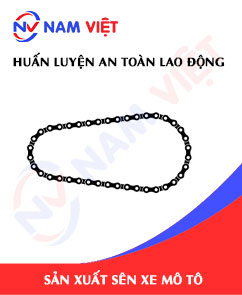
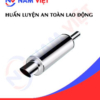
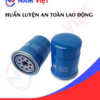



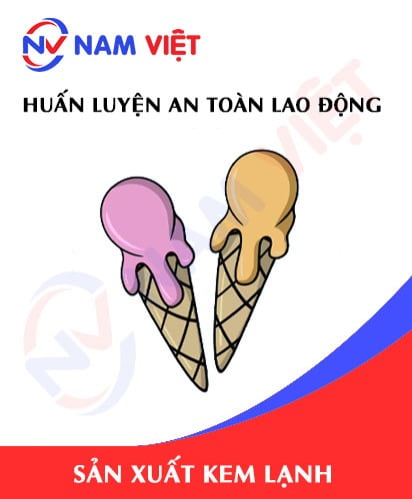

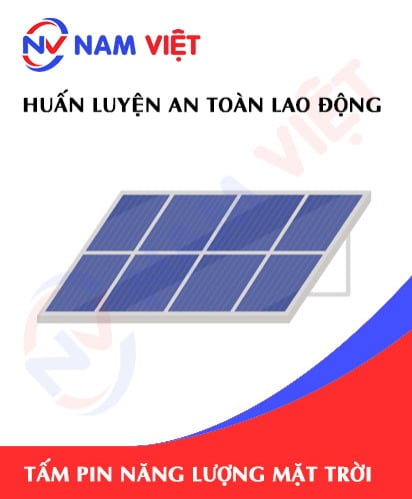

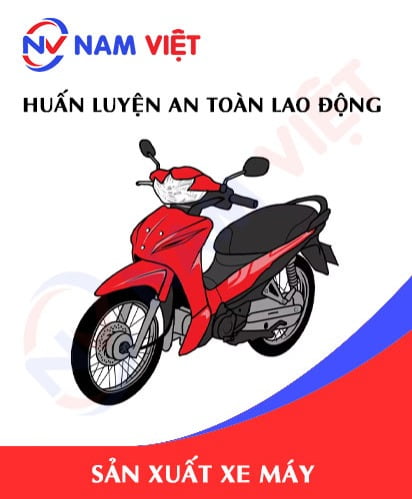

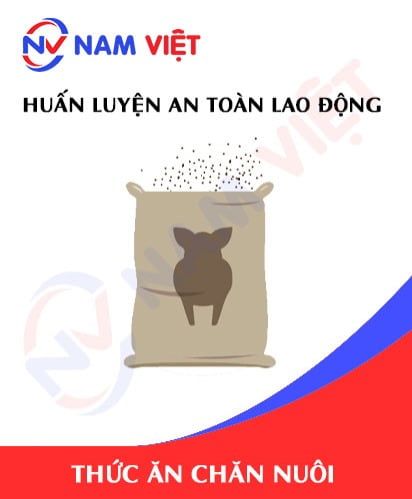
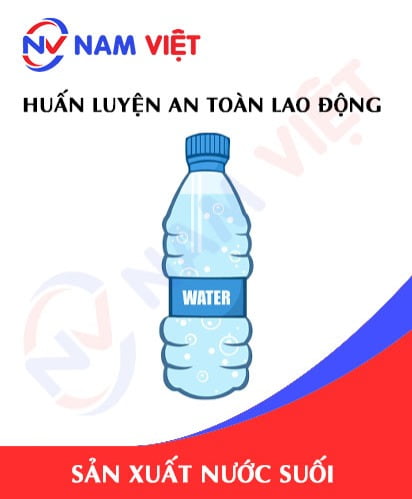
Review Occupational Safety Training for Motorcycle Chain Manufacturing
There are no reviews yet.